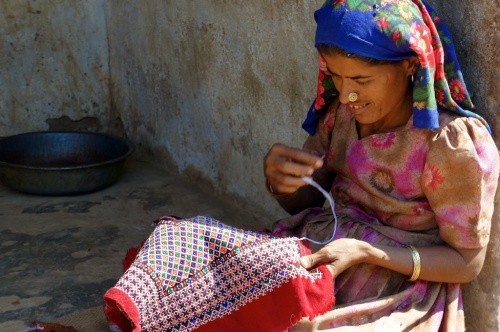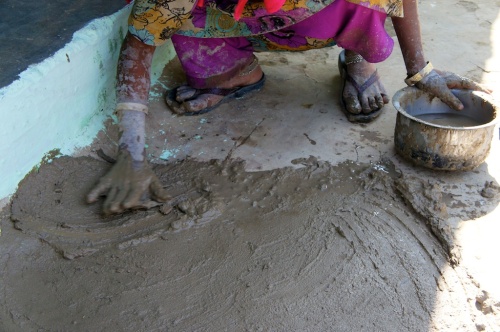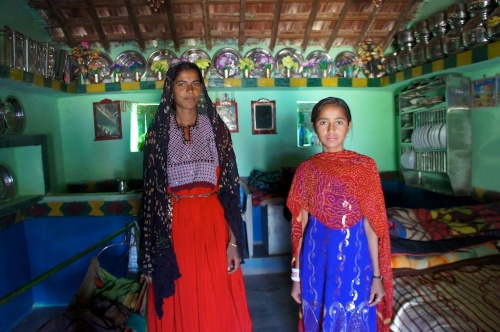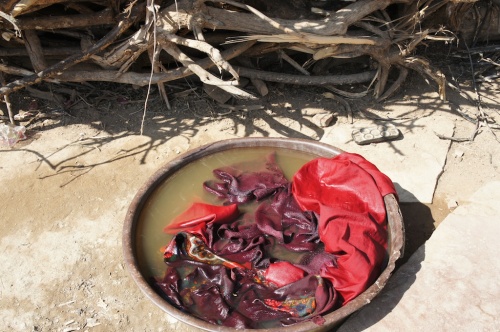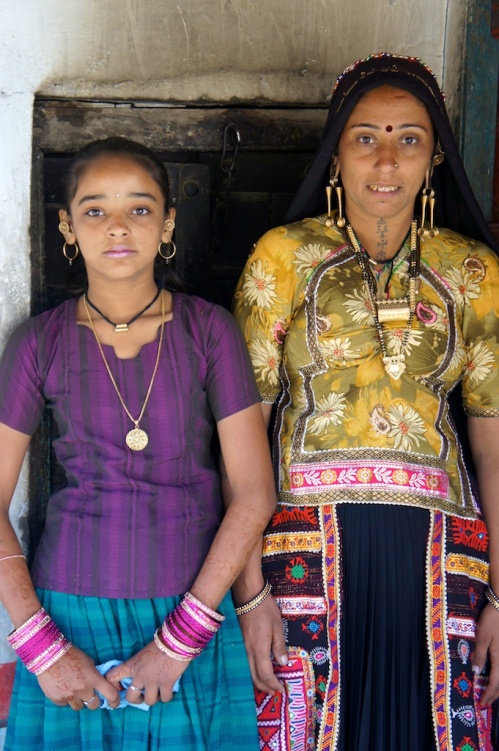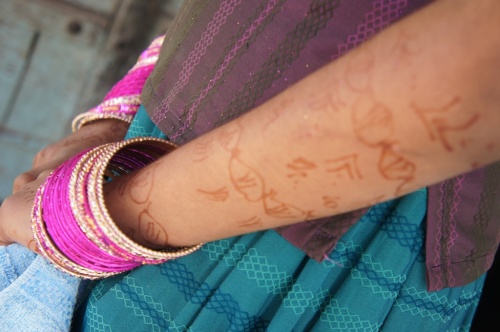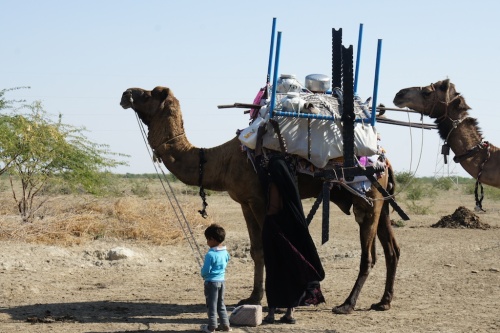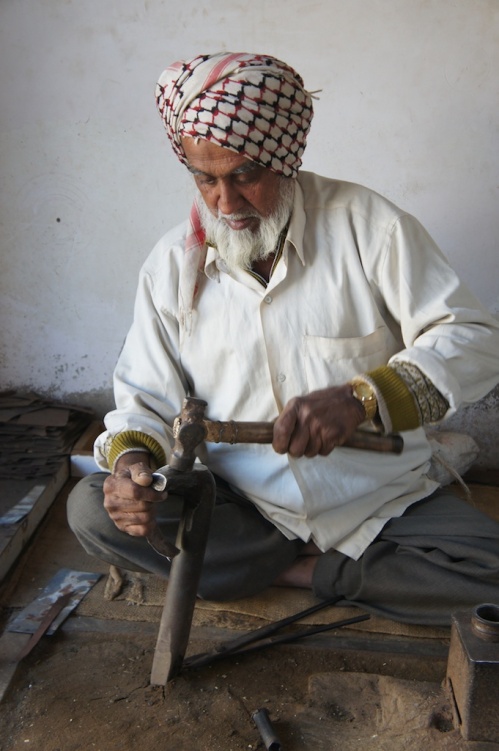While the natural beauty of the Kutch region in the state of Gujarat is absolutely astounding, most of the visitors that do come (there are not many), come for the village handicrafts that abound in this area. Different tribal villages specialize in different types of embroidery, terracotta pottery, lacquerware, and other crafts.
We knew we wanted to visit a lot of villages, not only to see the handicrafts but to hopefully meet some of the people. When planning our trip I saw in various travel books and websites that the man to see to arrange a village tour was Mr. Pramod Jethi. He can be found in the city of Bhuj (the city where you have to fly or take the train into to reach the Kutch region), at the Aina Mahal Museum, where he is curator and has a small tourism desk there. Mr. Jethi (literally) wrote the book on Kutch and knows everything about its 875 villages and multiple tribes. So, when we arrived in Bhuj the first thing we did was go see Mr. Jethi. After discussing with us what we were interested in seeing and mapping out a 3 day itinerary, he called one of his autorickshaw drivers/guides names Bharat, who came to pick us up there in a matter of minutes. Permission is needed from the police to visit certain villages, but Bharat arranged all of that for us. He was also a wonderful translator and very encouraging of our photography.
The next three days were a whirlwind of villages, beautiful handicrafts, and generous people who invited us into their homes. And what homes these were! Although small (only one room), it is easy to tell how important artistry is to the people as soon as you see the beautiful painting and mudwork inside and outside of the huts. We were truly amazed at the beautiful mirrorwork in many homes. Lunch everyday was had in someone’s home–some accepted payment and some did not.

Just because they live in a desert village doesn't mean they don't have a television! And of course, the television has to be decorated.

Not all the homes were so beautifully painted. The region suffered a devastating earthquake in 2010 and many homes were damaged.
Of course, the children were always fascinated with us and wanted to have their picture taken! In the Rabari village of Khodai there was a wedding going on and we became the unofficial photographers of the groom’s side!
We interacted with several different tribes: Dhanetah Jat, Gharacia Jat, Harijan, and Rabari. Mostly, the men work in the desert grazing cows and sheep while the women take care of the home. They each have their own specific type of embroidery that they wear. Some are nomadic or semi-nomadic and they ended up in Kutch from places like Jaisalmer, Iran, and maybe even Afghanistan.

A Rabari woman demonstrates the tools attached to her solid gold necklace: a toothpick, earpick, and nail file
Aside from the various types of embroidery, we also got to observe and learn about some pottery making with very unique painting on it, handmade copper bells (the Kutchis use them for their camels and buffalo so they can find them), the dying art of lacquerwork, and rogan–Nirona village is home to the last family that creates handmade rogan.

Lacquering is an intricate process. The crafter operates the lathe with his feet, spinning the item he wants to lacquer in this case a spatula) back and forth, first cutting grooves into the wood.
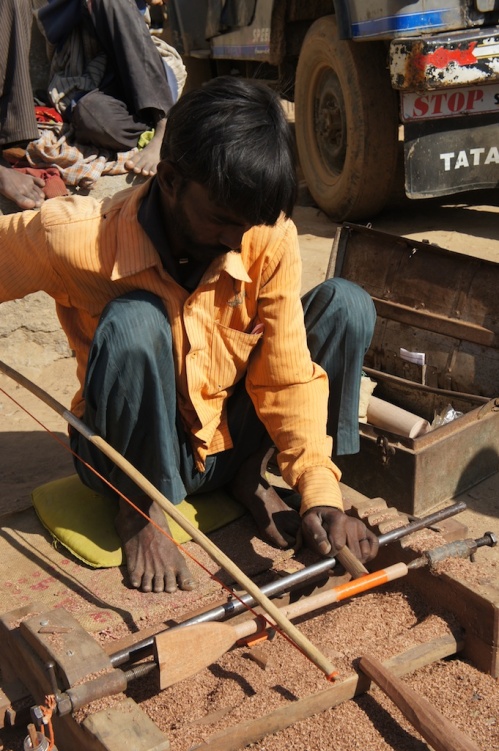
Next, he takes a colored wax stub and holds it against the rotating object. The heat created melts the waxy substance onto the object, coloring it.

The ancient art of rogan painting is created with boiled castor oil that has turned into a gooey paste. Colored powder is mixed into the oil and an iron rod is used to paint half of the design onto fabric.

After one half of the painting is finished, the artist folds the fabric in half and a mirror impression is transferred to the other side.

The crafters don't use any welding to create the bell, it's all done by connecting notches and hammering down the top to attach to the cylinder.
During our three days of village exploration we spent one night in Bhuj and one night at the Shaam-E-Sarhad Village Resort in Hodka, a lovely village with a tribal owned and operated hotel. The hotel used traditional mud huts and “eco-tents” that they updated with modern amenities and are actually quite luxurious. Plus, you get a nice group dinner buffet and traditional live music around a bonfire after the meal.

The eco-tents of Shaam-E-Sarhad in Hodka.
Our visit to Kutch was our favorite week in India. While we saw many beautiful places throughout the country, Kutch is an environment like no other. The combination of natural magnificence, fascinating culture, and friendly people came together to create a truly magical experience. And, we were certainly lucky to get such an excellent driver/guide who definitely enhanced our experience.


